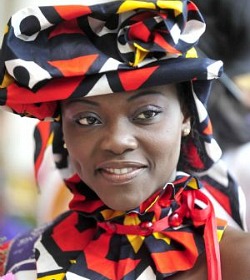 The Republic of Angola is a beautiful country in the southern part of Africa. Angola shares borders with the Republic of Namibia to the south, the Democratic Republic of Congo to the North and the People's Republic of Zambia to the east. Angola also borders the Atlantic Ocean in the west.
The Republic of Angola is a beautiful country in the southern part of Africa. Angola shares borders with the Republic of Namibia to the south, the Democratic Republic of Congo to the North and the People's Republic of Zambia to the east. Angola also borders the Atlantic Ocean in the west.
The Republic of Angola has a total land area of about 1,246,700sq.km (with about 1,600km of coast line) and a total population of about 18.5 million people with the population growth rate hovering around 2.03%. Majority of the total population of Angola (about 59%) live in urban areas in major cities and towns such as Luanda(the capital of Angola. More than 5 million people live in Luanda today), Huambo (another major city. Huambo contains about 1.3 million people).
The annual rate of urbanization hovers around 4%.
Just like its neighboring countries, Angola is a culturally rich country with several ethnic and racial groups living together. The major ethnic groups in Angola today include Ovimbundu (about 37% of the total population), Kimbundu (about 25% of the total population), Bakongo (about 13% of the total population), mestico (mixed European and native African. The Mesticos form about 2% of the total population of Angola), etc. with Portuguese being the official language. Unlike in most other African countries, indigenous beliefs reign supreme in Angola today helping preserve some of our culture and traditions.
Angola just like its neighboring countries is blessed with abundance of natural resources such as gold, diamond, bauxite, petroleum, uranium, phosphates, copper, iron ore, feldspar, etc. However, despite the abundance of natural resources in Angola, the Republic of Angola remains one of the poorest countries in Africa today. The Republic of Angola has a literacy rate of about 67.4% with female literacy rate hovering around 54.2%. In other words, about 67.4% of the total population of Angola above age 15 can at least read and write. Although this literacy rate falls below average in Africa today, it is far better than in countries such as Burkina Faso and Burundi. Although 67.4% is far better than in most other African countries, quality education is very hard to come by in Angola today. Poor education especially poor girl-child education remains a major problem in Angola today.
Despite the abundance of natural resources, Angola remains one of the poorest countries in Africa today with at least 55% of its total population living below poverty line (according to a recent UNDP Human Development multidimensional poverty Index developed by Oxford University). Life expectancy of the total population of Angola remains around 38.76 years which is one of the worst in Africa and in the world today.
Rampant deforestation of the tropical rain forest (the rampant cutting down of trees for timber in response to international demand) resulting in soil erosion, desertification, siltation of rivers and dams, and the loss of biodiversity, etc. are some of the major environmental issues facing Angola today.
Although sex education and other youth education programs are helping a lot in the fight against HIV/AIDS, about 200,000 Angolans were living with HIV/AIDS in 2009 with about 11,000 deaths recorded in the same year. In other words, the deadly HIV/AIDS continues to kill in Angola today. The deadly malaria and water-borne diseases such as typhoid fever, protozoal and bacteria diarrhea, etc. also continue to threaten several lives in Angola today.
Just like in most other African countries today, corruption levels remain at all-time high in Angola. Mismanagement of funds, Incompetent leadership and Poor governance continue to tear Angola into pieces.
